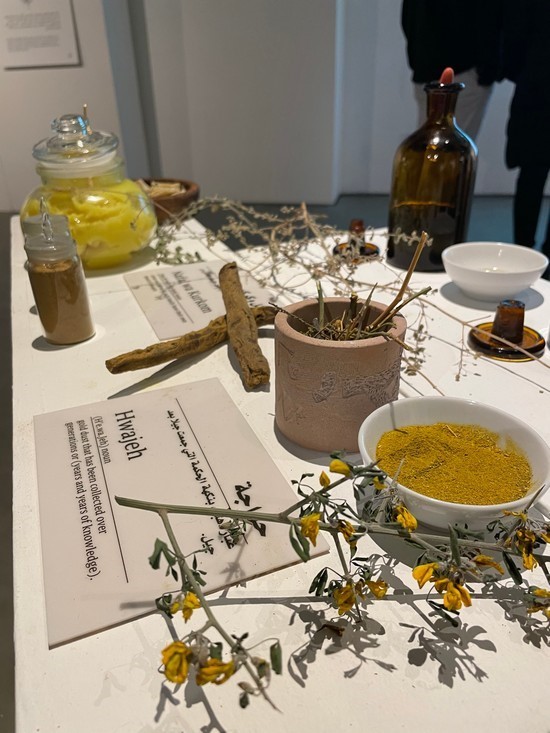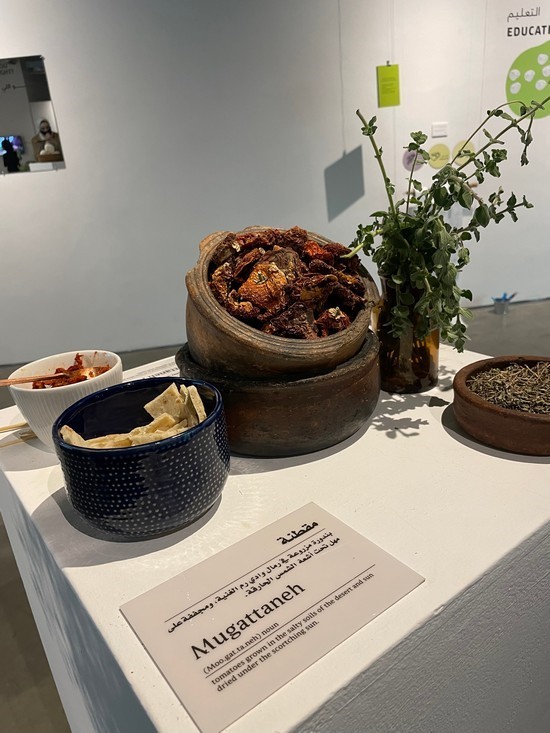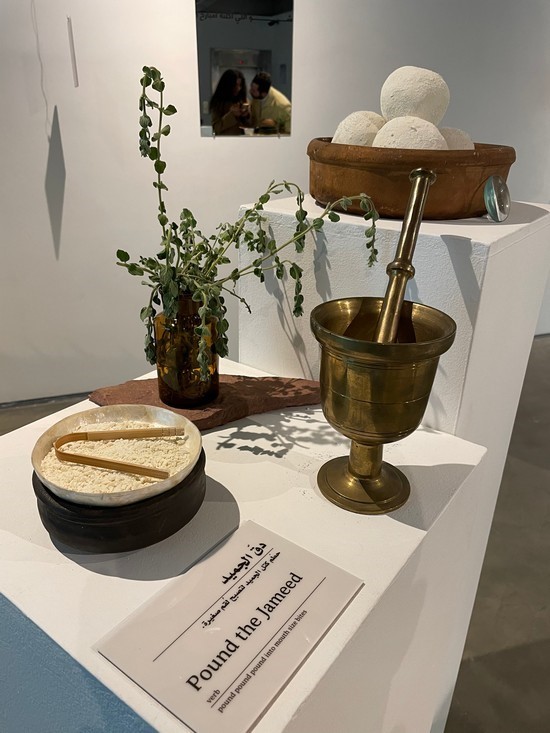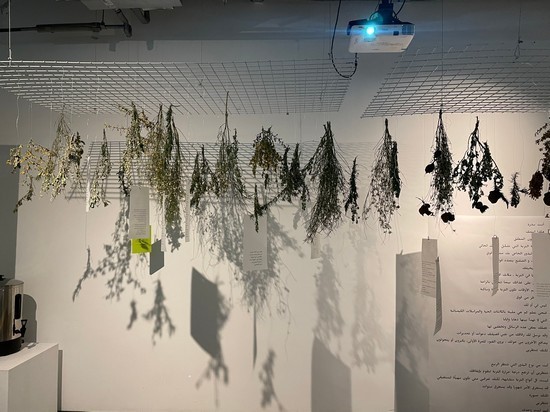This week I had the
pleasure of attending an exciting exhibition that is vital to food and design:
a holistic learning program addressing the intersections of food, design, and
ecology in Jordan, organized by design studio
Namlieh and the Goethe Institut.
اضافة اعلان
The exhibition documents the outcome of eight months
of four collaborative design projects that magnify grassroots and local efforts
to implement food-focused business models, projects, experiences and products
through collaboration with strategic partners and stakeholders from a wide
range of industries who ensure that the models are feasible, actionable, and
scalable.
The models presented were the result of
democratizing the design process, which brought people from all walks of life
together in a shared space for reflection, experiential knowledge production,
and social innovation.

The exhibition, held at the Jordan National Gallery
of Fine Arts in Jabal Luweibdeh, reflected on four projects this program has
been working on. It also consisted of interactive activities to gauge the
visitors’ understanding of the projects and to have their input toward finding
solutions to the problems that are not familiar to the Jordanian population.
The first project of this program was ZAD for
tourism; it created a system to support the whole community of
Wadi Rum. Haya
Issa, one of the leaders of this program, said that during trips to Wadi Rum,
visitors usually eat zarb, which is rice with lamb cooked in a pit in the
ground for an extended period of time.
This tradition, she said, only supports a few
community members, including the hypermarkets and the kitchen, instead of
including multiple members in this activity, such as farmers, herders, women
co-ops, and ceramics producers. So the team designed a trip to Wadi Rum that
includes multiple communities in the venture. ZAD is now a tourist trip that people
can book to enjoy a full bedouin experience that links multiple community
sectors in one activity.

The second project they highlighted, which was an
eye opener to me, was the monoculture and what can be done about it. The
exhibition shows how Jordan’s farmers are leaning more toward growing year
after year, the same type of produce year after year, which is mainly tomatoes
and dates, because of the demand.
Monoculture happens when farmers cultivate a single
crop without switching to another type to let the soil breathe and regenerate
its nutrients. Monoculture leads to the use of pesticides and, in the case of
tomatoes, overproduction that goes to waste.
The program is designed to generate new ideas for
the use of dates and tomatoes to reduce waste. This might not be a solution to
monoculture, but it is a measure that can be taken to reduce food waste.
The third project is a rooftop greening initiative
in the Martyrs Park, in
Deir Ghbar. An urban farming project in the heart of
the city gives young people the chance to reclaim public space to disseminate
information and foster relations among people, plants, and places.

This project aims to create communal agency and
inclusion, and raise food awareness. It will be overseen by the students of a
nearby school who will take care of planting. The farm is open for anyone
interested; just ask the attendant to open the door for you.
The final project is the Echo initiative, an
extracurricular educational program focused on environmental sustainability and
composting.
Echo seeks to create new opportunities to turn waste
into products beneficial to the environment and users. This educational program
also focuses on food waste. It encourages better daily choices for all those
involved in the project, and aims to connect children to the source of food
(soil), and to bring a more profound understanding of nutrition and personal
responsibility.
Manal Abu Shmais, from Namlieh, said that this
project aims to introduce food design into the whole city, to have a better reach
as a public program. The challenge this program will face are not the design
process itself, but the implementation of a program that runs with every
project.

Aside from the informative stations and the
interactive games, the exhibition included a little quiet reflection area where
dried herbs found in Jordan were hanging from the ceiling and the visitor could
cut and brew them to enjoy a hot herbal drink while reflecting on the knowledge
acquired throughout this exhibition.
The exhibition was an eye-opener to many. We often use the
word sustainable, yet we do not truly understand or live by it. What will bring
real change are collective efforts to create new market ecosystems that
rehumanize economies and support the formation of more experimental and ethical
food systems that closely link production and consumption.
Read more Good Food



